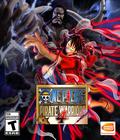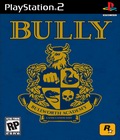Genre: Action
Publisher: Rockstar Games
Developer: Rockstar Vancouver
Release Date: October 17, 2006
I completely understand the mainstream hype surrounding the release of Bully. America is not even a decade removed from a school shooting instigated by teens who were constantly bullied. While that may be the most prominent instance of the bullied fighting back, it is sadly not the only one. Bullying and teasing have always been a part of the high school "class system," but it is no longer perceived as acceptable or innocent. Some might even call it an epidemic.
Rockstar Games have made their name on the Grand Theft Auto series of games, which are known by "moral advocates" and the mainstream media as "murder simulators," that is, games in which you can kill nearly any character at any time with little effort. When Rockstar announced that they were working on a game called Bully, the backlash was based entirely on assumptions. How could a major American gaming company put out a "bullying simulator" and get away with it? At what point does good fun cross the line and become bad taste?
Don't believe the hype.
Bully is neither a "bullying simulator" nor "Grand Theft Auto: The Teen Years." While it runs off of an enhanced version of the Grand Theft Auto: San Andreas game engine, the game features not a single death, firearm, or sharp object. Instead, Bully steps away from the line of bad taste and was created entirely in good fun. Like Rockstar's best games, it is a send-up of the material it covers: being a teenager and going to high school. Humorously enough, the main character is barely a bully but rather someone who looks out for himself and his friends, whoever they may be at that time. The real bullies in this game are the ignorant parents, miserable professors, and sociopathic loners – sounds pretty realistic to me.
Jimmy Hopkins is a bit rough around the edges, having been kicked out of every private school he has ever attended. Mom sounds like a gold digger, and dad – well, "dad" is whoever mom married last. As his mother and new stepfather head out for an extended honeymoon, Jimmy is dropped off at the Bullworth Academy for an extended stay. Now, Jimmy must make it through an entire school year, dealing with the best and worst of young society. Along the way, he will make as many enemies as he does friends, but more importantly, he will show his true worth as an individual cast aside by both his parents and the institutions that had previously harbored him.
While Bully has some things in common with the Grand Theft Auto series, several key distinctions keep the games at a considerable distance from one another. The biggest has to do with its setting – going to school means having to attend class. Jimmy is expected to attend two classes each day, though you have the ability to ditch or arrive late. However, skipping class makes you truant, and any prefects, professors, or police officers that see you wandering around during a class period will attempt to chase you down.
Six subjects are explored in the classrooms of Bully, and each has five classes that must be mastered before you are considered exempt. Completing a class improves your character in some way; for example, completing your English classes will allow you to negotiate your way out of punishment or into the hearts (and mouths) of the fairer sex. Each class consists of a mini-game that is somehow related to the subject. Gym class has you wrestling or playing dodgeball to enhance your physical skills, while Chemistry makes you input button combinations as to properly mix ingredients. Fans of the arcade classic Qix should get a kick out of the Art classes.
Jimmy can use his fists to solve his problems, but he may also use his words and bribes. Holding down the L1 button brings up social interaction options, which can be used to talk your way out of a fight, insult someone, or give a gift to someone. The environments are fairly interactive as well, allowing you to hide in trash cans, break into lockers, and climb over broken-down walls. Jimmy wields a number of (typically) non-lethal weapons, including a slingshot, fire crackers, marbles, and itching powder. It is usually easier to just pummel someone until he or she is rolling on the ground, but the weapons allow for some variety and will come in handy when a projectile attack is best.
While much of the action takes place on the campus grounds, a number of surrounding areas are revealed after the conclusion of the first chapter (about three hours in). Though Bully is much smaller in scale than the recent Grand Theft Auto titles, there are still a significant amount of places to visit. Bullworth Town, just across the bridge, has a comic book shop, a hair salon, a clothing shop, and several other places to spend your in-game cash. Head east or west from there and you can check out New Coventry or Old Bullworth Vale. Just south of New Coventry is the Blue Skies Industrial Area, as well as the Happy Volts Asylum. Each major area gets significant play over the course of the game, and each has its own distinctive style and set of townies.
Though Bully uses the "go anywhere, do anything" style of Rockstar's most famous franchise, you may not feel as compelled to mess around for several hours. With each new iteration of the Grand Theft Auto series, I would kill several hours just swiping random vehicles and wreaking havoc around the city. Jimmy Hopkins is only 15, so the most advanced vehicle he is able to nab is a moped. The motorcycle-riding police officers can be a pain to shake off, so it's usually just better to rely on your always-handy skateboard or an easily accessible bicycle. While neither is likely to inspire free-wheeling mayhem, each provides a quick way to get to your next destination.
Instead of focusing on unadulterated chaos, Bully is all about narrative and an immersive experience, and it excels in both arenas. The humor is extremely tongue-in-cheek, so much so that a younger teenager might not get all of the jokes. Bully seems more targeted towards the 20- and 30-somethings that have already been through the horrors of high school and can now look back and laugh instead of cringe. My most vivid experiences of private school come from the Harry Potter films, but the humor translates well for those of us who went to public schools. Bully develops strong, recognizable characters, and then proceeds to use them throughout the game. In fact, you will run into the same characters all over the world map, which really emphasizes that sense of it being a living world.
The storyline is presented over five chapters, for a total of 12 to 15 hours of gameplay. Over 50 missions are included in the main adventure, though over 20 more are available to extend the experience, along with odd jobs, races, mini-games, and a slew of collectables. Bully may not seem like a grand experience, but there's quite a bit to it if you are willing to go beyond the main adventure. As you progress through the chapters, the seasons will change, as will your interactions with the surroundings. In the winter, vehicles will slip and slide around, and you can make snowballs to use as weapons. The world of Bully is immersive, though the comical nature and juvenile characters make it seem less realistic than the world of San Andreas.
Bully is a highly detailed game and is clearly a step above San Andreas in that respect. The characters are intricately modeled, and the environments have many more visual details than you might expect from a PlayStation 2 title. While the game runs at a fairly steady clip, the framerate is never exceptional. Though it will not likely hamper your experience, the stuttering backdrops are a minor annoyance that should have been addressed prior to release. Perhaps a next-gen port can better represent the world of Bullworth Academy and its nearby surroundings.
Bully features over 100 unique, voiced characters, yet you will hear the same lines over and over again. The dialogue in the cut scenes is all very well done, but the random in-game quips may drive you nuts after 30 or 40 listens. Thankfully, Bully features an exquisite original score written and performed by Shawn Lee. Several musical styles are explored within the tracks, and simplicity is often emphasized – it's amazing what can be done with a solid bass line and a set of bells. A couple of licensed tracks would have been nice, but Bully seems to be aiming for a timeless feel. Rather than use pop-culture references to tie it down to a particular era, Bully is a game to be enjoyed by mature people of all ages and walks of life.
Forget what you've heard from crusading lawyers or cable news networks – Bully is not a "bullying simulator," nor is it particularly violent. Instead, Bully is one of the most appropriately rated games in the history of the ESRB. Its "Teen" rating is dead-on – though the game has violence, light vulgarity, and sexual themes, it never crosses the line to become an adult experience. Bully is an open-world, story-driven, high-schooling experience unlike any you have played before. Though it may not be Rockstar's crowning achievement, it certainly comes close and is among the better PlayStation 2 exclusives released in 2006. Pray that Bully: Vice High is next on the horizon.
Score: 8.7/10
More articles about Bully










 The game's main character is 15-year-old Jimmy Hopkins, who must defend himself against school bullies at a fictional U.S. boarding school called Bullworth Academy, while dealing with characters ranging from nerds and jocks to authoritarian prefects. Weapons included baseball bats that break after several blows, stink bombs and bags of marbles that when strategically thrown will lay flat most pursuers.
The game's main character is 15-year-old Jimmy Hopkins, who must defend himself against school bullies at a fictional U.S. boarding school called Bullworth Academy, while dealing with characters ranging from nerds and jocks to authoritarian prefects. Weapons included baseball bats that break after several blows, stink bombs and bags of marbles that when strategically thrown will lay flat most pursuers.










































